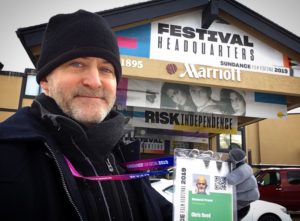Christopher Llewellyn Reed’s 10 Documentaries to Watch from Sundance 2019
Written by: Christopher Llewellyn Reed | February 3rd, 2019

The Sundance Institute was founded in 1980 by actor Robert Redford in Park City, Utah, as a filmmaking laboratory to promote the art and craft of independent cinema. In 1985, the Institute took control of the U.S. Film Festival, later renaming it the Sundance Film Festival. Since that time, the annual event has grown in prestige, becoming a major showcase of new movies, where established artists and up-and-comers mix and mingle in the (mostly) relaxed environment of what is effectively still a ski-resort town. Held at the end of January, the festival frequently takes place in frigid temperatures and snowy weather, and this year – my first in attendance – offered both.
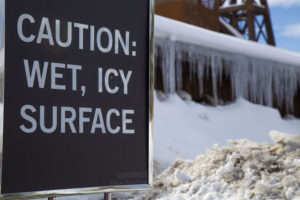
I arrived on Wednesday, January 23, the day before the festival began, in the middle of a mild snowfall, with high four-foot snow banks on most streets. Fortunately, during my stay (until Monday, January 28), no more snow came down, and during the day the thermometer rose, sometimes, into the low-to-high 30ºs (at night it was significantly colder). It was nothing that a warm coat and good boots couldn’t handle, however, and though I chose to walk between theaters whenever possible, Park City also offers a wonderful shuttle system – boosted during the festival – that transports crowds with relative ease from location to location. It is a beautiful location, to which I would love to return to sample the slopes, as well.

But I was there to watch movies, and that’s what I did. I focused primarily on documentaries, given the theme of my podcast, The Fog of Truth, seeing almost none of the narrative-fiction features. Here, then, is a list of my 10 favorite documentaries from Sundance 2019, in alphabetical order, with brief capsule reviews of each, all adaptations of longer reviews I wrote for Hammer to Nail. A number of my choices also won awards (here is the complete list of winners): Apollo 11 (U.S. Documentary Special Jury Award for Editing), Knock Down the House (Audience Award: U.S. Documentary), One Child Nation (U.S. Grand Jury Prize: Documentary) and Midnight Traveler (World Cinema Documentary Special Jury Award for No Borders). I did not include the terrific Maiden on the list because I saw it in Toronto, reviewed it then, and placed it among my top documentaries from that festival. It’s wonderful and should be seen by all. If a film you saw and liked, or heard great things about, is not on my list, it could be that I simply didn’t see it. Too many films, so little time …
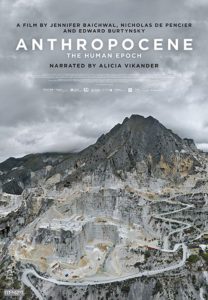
Anthropocene: The Human Epoch (Jennifer Baichwal/Edward Burtynsky/Nicholas de Pencier) [the paragraph, below, is an adaptation of a longer review I wrote for Hammer to Nail]
A gorgeously photographed meditation on the potential end of the world, Anthropocene: The Human Epoch is the third film in a documentary trilogy spearheaded by director Jennifer Baichwal. Though I have not seen the previous two – Manufactured Landscapes and Watermark– I was enchanted by the hypnotic combination of stunning visuals, evocative music and pensive voiceover (spoken by Swedish actress Alicia Vikander. Working together with her colleagues Edward Burtynsky and Nicholas de Pencier, Baichwal creates a cinematic essay chock full of information about how our current era, which scientists are now lobbying to label the “Anthropocene” (the Greek prefix “anthropo” meaning “human”), is one where, for the first time, the activities of our own species are the defining influence on the planet. We had some effect on our past and a lot on our present, but the future is indelibly ours to make, for better or, most likely, for worse. Divided into multiple parts, with titles such as “Extraction,” “Terraforming,” “Anthroturbation” and more, Anthropocene can sometimes wax overly pedantic, though the measured tones of Vikander’s narration help to make abstract concepts concrete.

Apollo 11 (Todd Douglas Miller) [the paragraph, below, is an adaptation of a longer review I wrote for Hammer to Nail, which has yet to post, as of this writing]
By now, in the annals of cinema history, we have seen our share of movies about space flight, including narrative films like Philip Kaufman’s The Right Stuff and Ron Howard’s Apollo 13 and documentaries like Mark Craig’s The Last Man on the Moon and Emmanuel Vaughan-Lee’s brilliant Earthrise, this last one a thirty-minute short released just last year, telling the story of Apollo 8, the mission that was a dry run for the actual moon landing, its three astronauts merely doing a drive-by of their destination. Also out in 2018 was Damien Chazelle’s First Man, a dramatized telling of the life of Neil Armstrong that culminated in his walk on the moon.
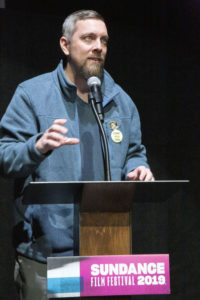
Now here comes the pure nonfiction version of that story, entitled simply Apollo 11, from Todd Douglas Miller (Dinosaur 13). And pure it is, masterfully constructed from period archival footage, captured on the ground, here on earth – much of it shot in a high-resolution, wide-format 70mm film gauge – as well as in space by the astronauts, themselves. With no voiceover commentary other than that offered from newsreels of the time, the movie is as unadulterated an observational procedural of the flight, from start to finish, as one could hope for (barring a 9-day chronicle showing every second of the voyage). Only three men sat in the capsule on takeoff, but now, thanks to Apollo 11, we can all share vicariously in the thrill of their accomplishment.
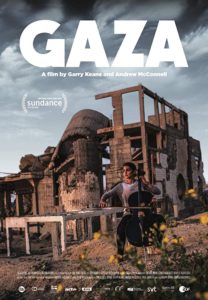
Gaza (Garry Keane/Andrew McConnell) [the paragraph, below, is an adaptation of a longer review I wrote for Hammer to Nail, which has yet to post, as of this writing]
A documentary where the central character is a location, rather than a single person, as befitting its title, Gaza, from Garry Keane and Andrew McConnell, presents its subject in all the misery and glory of its current condition. 25 miles long and 7 miles wide, with 2 million inhabitants squeezed into a land mass mostly deprived of fresh water and consistent electricity, Gaza is, as one person in the film calls it, nothing more than an open-air prison. Under blockade by Israel because of the extremist policies of its Hamas-controlled government, the Palestinian enclave is home to a population unable to progress beyond bare subsistence. Agree with Israel’s response to Hamas or not, it’s the ordinary folks who suffer the most in any conflict between authorities. In their movie, Keane and McConnell strive to honor the basic human dignity of a people that just want to live a normal life. Beautifully shot and masterfully edited, the film remains squarely within the confines of Gaza, the people and forces of Israeli seen only from a distance – if at all – as soldiers firing from the border wall or gunships enforcing the blockade (there is a 3-mile off-shore fishing limit). To the various Palestinians we meet, the Israelis are faceless oppressors. Still, many of them are no particular fan of Hamas, either, but what can they do? Who can resist men with guns who are determined to use them? It’s a wonder, in fact, that any peace reigns within the Gaza Strip at all.
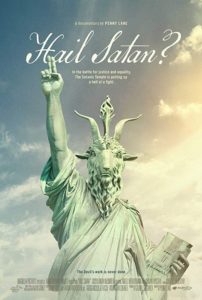
Hail Satan? (Penny Lane) [the paragraph, below, is an adaptation of a longer review I wrote for Hammer to Nail]
The new feature-length documentary from Penny Lane (Our Nixon) offers a profile of the Satanic Temple, following its members as they engage in their dastardly plan to … plan peaceful, non-violent demonstrations against the increasing intrusion of religion into our nation’s political sphere. Made up mostly of atheists, many of whom have had bad experiences in the religious groups of their birth, the Temple is a loose confederation of regional organizations managed by a national council headed by founder Lucien Greaves (not his real name). As much anarchist (though a gentle one) as atheist, Greaves speaks with regret about the increasing need for such an administrative structure, looking back fondly at the days when there were fewer Satanists. Still, there is strength in numbers: “Some things are lost, some gained,” he muses. Guided by their “seven tenets” – which promote a code of conduct that should make any ethically minded institution, or religion, proud – the adherents of this brand of Satanism seek to change the world one irreverent action at a time.
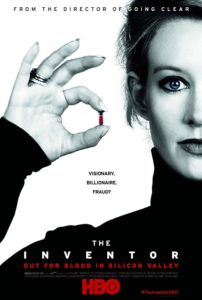
The Inventor: Out for Blood in Silicon Valley (Alex Gibney) [the paragraph, below, is an adaptation of a longer review I wrote for Hammer to Nail, which has yet to post, as of this writing]
Prolific documentary director Alex Gibney (The Armstrong Lie, We Steal Secrets, Zero Days and so much more) is out again with yet another tale of success undone by hubris and greed. In The Inventor: Out for Blood in Silicon Valley, he turns his sharp investigative lens on Elizabeth Holmes, whose blood-testing company Theranos finally closed its doors in 2018 after a meteoric rise and fall within less than 10 years. Once touted as the second coming of Steve Jobs, even dressing the part in daily black turtlenecks, Holmes lost control of her dreams when the technology she touted – a miraculous device that would deliver complete lab results from just a pinprick of blood, removing the need for needles and larger blood samples – failed to function. Her solution? Lie and cheat. Never a good idea.
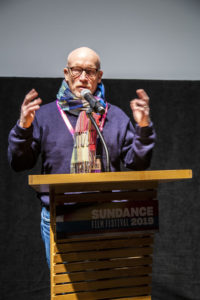
Gibney gives us a complete cast of characters, from journalists to researchers to executives to Theranos board members and more, many of whom enabled Holmes’ forward progress and/or cheered her along. As with so many of his documentary subjects over the years, Holmes crafted a mythology about her life that made it hard to see criticism of her as anything but spiteful hatred. Methodically, and with great detail (perhaps he could use less, in fact, as the film feels long), Gibney peels back the many layers of fiction – or, to reappropriate the film’s title with a secondary meaning, of “invention” – that made for appealing fantasy until the nightmare of reality dispelled the magic. Theranos and its leader are now closed for business, and that’s all for the best.

Knock Down the House (Rachel Lears) [the paragraph, below, is an adaptation of a longer review I wrote for Hammer to Nail, which has yet to post, as of this writing]
A rousing, profoundly inspiring paean to grass-roots democratic movements, Rachel Lears’ Knock Down the House profiles a number of underdog challengers – all of them women – to establishment figures in the 2018 midterm congressional and senatorial elections. Duly elected Representative Alexandria Ocasio-Cortez, of New York’s 14thDistrict, emerges as the star, but the documentary is about more than just her ascendance. Lears (The Hand That Feeds) gives us a vibrant view of the United States of America at our current political crossroads, its citizenry struggling with how to wake up the ruling class to the needs of the people. When even the nominal liberals – i.e., the Democrats – in a two-party system are beholden to corporate interests, what are progressives to do? As this movie makes clear, the answer is to run, run and run some more. No change happens without massive effort, and even if only one person makes it through, that’s one who wasn’t there before. Watch and learn; this is how it’s done, one candidate at a time.
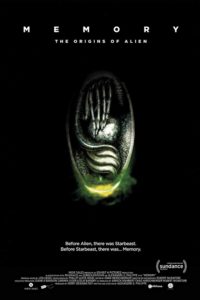
Memory: The Origins of Alien (Alexandre O. Philippe) [the paragraph, below, is an adaptation of a longer review I wrote for Hammer to Nail, which has yet to post, as of this writing]
Ridley Scott’s mesmerizing 1979 sci-fi/horror blend Alien remains, to this day, a significant cultural and artistic touchstone, its visceral thrills hardly lessened by the passage of time. Indeed, the memory of my first exposure continues to color all subsequent viewings, the frisson of that initial fright, mixed with disgust, over the monster bursting from actor John Hurt’s chest a testament to its raw, elemental power. Perhaps it’s more than appropriate, then, that director Alexandre O. Philippe (78/52: Hitchcock’s Shower Scene) has entitled his film about the complicated making of Alien “Memory,” though it was certainly not for my benefit, alone. That was actually the name of the original script and is just one of the many interesting tidbits we learn, mixed in with impressive substantive interpretations of the movie’s meaning, in Philippe’s comprehensive profile of the behind-the-scenes making of Scott’s early masterpiece.
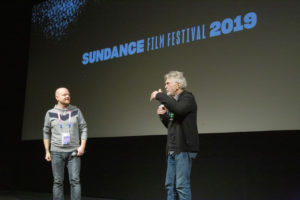
As stunning as Scott’s talents may be, the movie is really about writer Dan O’Bannon, as well as the movie’s legacy, and brings to the screen a large cast of talking heads to discuss the philosophy, mythology and blood and guts of the work. My favorite among them may be Turner Classic Movie’s Ben Mankiewicz, who offers smart analysis with deadpan wit, but there’s also actress/writer/podcast host Clarke Wolfe; Belgian filmmaker Axelle Carolyn; Carmen Giger and Diane O’Bannon, the widows of the designer and writer, respectively; the great schlockmeister himself, Roger Corman(who offered to make Alien, though only if O’Bannon couldn’t raise the money that he needed, and thank the heavens he did); Alien’s art director, Roger Christian, and producer, Ivor Powell; and stars Veronica Cartwright and Tom Skerritt, as well as many others. Let me reassure fans of Alien, however, that Philippe and company spend a lot of time on the famous chest-burster scene, covering it from so many angles that my own chest may have exploded, as well. It’s a small price to pay for this exciting combination of entertainment and historical analysis, however, and I’ll take it.
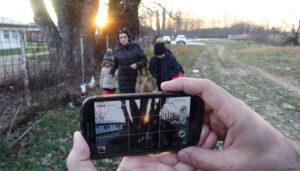
Midnight Traveler (Hassan Fazili, 2019) [the paragraph, below, is an adaptation of a longer review I wrote for Hammer to Nail]
A work of uncommon immediacy and raw emotional power, Midnight Traveler presents a first-hand account of a perilous refugee journey undertaken by an Afghan family of 4. When filmmaker Hassan Fazili is targeted for execution by the Taliban after they dislike a previous film of his, he flees to Tajikistan with wife Fatima and young daughters Nargis and Zahra. After 14 months, their asylum applications to Western nations rejected, and facing deportation, they head back to Afghanistan, despite the danger, in order to regroup and take the illegal, smuggler’s route into Europe, in the hope that, once there, they will better be able to plead their case. And so we follow along as they document, on three different iPhones, this new trip, over more than 600 days, all members of the family participating in the creative process. Beautiful and frightening. Midnight Traveler offers a profound exploration of the human condition in all its misery and glory.

One Child Nation (Nanfu Wang/Lynn Zhang, 2019) [the paragraph, below, is an adaptation of a longer review I wrote for Hammer to Nail, which has yet to post, as of this writing]
One Child Nation follows co-director Nanfu Wang (I Am Another You) as she returns home to China, new baby in tow, to explore the toll wrought on her country by its 36-year-long “One Child” policy. Begun in 1979 to forcefully manage a population rapidly outgrowing its resources, the policy mandated that couples could only have one child, with few exceptions. Since boys are valued more highly than girls (and not only in China), the policy led to unintended consequences: parents abandoning daughters in markets, or on roadsides, or giving them up to human traffickers. Though the Chinese government reversed course in 2015, now permitting two children per couple, the atrocities committed in service to the law still haunt the nation. As Wang digs deep into the past, she uncovers shocking secrets that many would prefer never be revealed. But here they are, and the result is a documentary both moving and profoundly horrifying. Gird yourself for cinematic trauma, but watch, anyway, in honor of those who suffered and died.
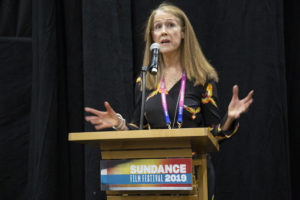
Untouchable (Ursula Macfarlane, 2019) [the paragraph, below, is an adaptation of a longer review I wrote for Hammer to Nail, which has yet to post, as of this writing]
The fall of film producer and distributor Harvey Weinstein in the waning months of 2017 came rapidly, but not soon enough. A monster of a man, he for years raped and assaulted countless women, only some of whom have come forward. Whatever his considerable genius as a marketer of moving-image content – indeed, the films he championed frequently won major awards – no amount of business success could ever justify tolerating outrageous, criminal behavior. In her documentary Untouchable, director Ursula Macfarlane (One Deadly Weekend in America) presents some of the women attacked by Weinstein, finally giving them the voice they have always deserved, as well as offering them the raw power that a cinematic close-up can so richly convey. They are not just survivors, but brave superheroes, and this movie honors their courage. #timesup
That concludes my recommendations of 10 Sundance documentaries, though I add Kim Longinotto’s Shooting the Mafia and Matt Tyrnauer’s Where’s My Roy Cohn? as honorable mentions. Be sure to catch any of the above if they come to a festival or theater near you, or to a streaming service to which you subscribe (or rent them on VOD when they become available). Enjoy!
